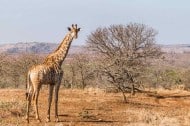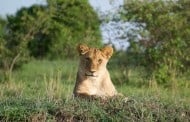
7 Tips for Wildlife Spotting on Your African Safari
Did you know that Africa is home to over 1,000 different species of mammals and over 2,500 species of birds? Not only that, Africa is home to 4 of the five fastest land mammals: the cheetah, the wildebeest, the gazelle, and the lion.
If you want to see some of these amazing African animals, a safari is the trip of a lifetime. The goal is to see wildlife, so you’ll want to do all that you can in order to see as many animals as possible. Seeing the “Big Five” safari animals is the goal of many safari-goers.
Keep reading to learn more about the Big Five safari animals and what you can do to increase your chances of seeing each of them.
The “Big Five” Safari Animals
In Southern Africa, the big five are considered safari royalty. The phrase “big five” was originally created by game hunters who discovered that these species were the hardest and most dangerous animals to hunt on foot. Because they were so difficult to hunt, they were the biggest prizes.
Now, the big five represent the most sought-after animals that tourists want to see on a safari. The big five are the African lion, the African leopard, the African elephant, the Cape buffalo, and either the white or black rhino.
There are lots of other animals to see, though, that aren’t considered one of the big five. Most tourists would be thrilled with a spotting a cheetah, wild African dogs, giraffes, and hippos.
How to Spot Wildlife on Your Safari
Don’t set your expectations too high. If you expect that you are going to see every animal possible, you will likely be disappointed. Having said that, there are some things you can do to increase the likelihood that you’ll see as many animals as possible.
1. Consider the Time of Day
Animals make their movements at certain times of day, most often at dawn and dusk. During dawn and dusk, there is light, but the heat of the sun isn’t as intense as in the later morning and afternoon.
The middle of the day is usually too hot for mammals and birds, but you can often see reptiles or the larger mammals hiding in the shade of large trees like the acacia or the baobab.
2. Find Water
Finding a water source is a good way to see animals as they will also seek out the water, especially during the dry season. Quietly hanging out near watering holes, rivers, or lakes where animals have easy access to water gives you a good chance of spotting wildlife.
Predators and large herbivores tend to drink at dawn or dusk while antelope drink throughout the day. Rhinos often drink in the evening. Timing your trips to the times when animals are on the move and drinking is a great way to up the odds that you’ll see lots of wildlife.
3. Know Habitats
Animals gravitate towards specific places in their habitat. If you know where they like to hang out, your chances of spotting wildlife are much higher.
If there are certain animals you really want to see, do a little research to learn more about their habits. Some like to congregate in or near trees, in or on termite mounds or holes in the ground, or in the reeds or grasslands.
4. Watch the Weather
Pay attention to the weather, as it can impact animals and their movement quite a bit.
Sun or high winds drive animals to take cover, so look in sheltered areas for them. Overcast weather often provides good viewing conditions and after a storm, animals might be on the move as insects and frogs emerge and are followed by their predators.

5. Look for Tracks & Signs
Keep your eyes open for the telltale tracks and signs of the animals. Droppings, tracks, and nests are things to watch for. Elephants and larger animals will leave easy-to-spot tracks on sand or dirt roads.
Cats or other hunters might leave the road to go hunt, so watch for where you no longer see their tracks in the sand or dirt.
6. Have the Right Tools
Pack your safari bag with two must-have tools for viewing wildlife: binoculars and a guidebook. Binoculars will help you spot animals further away and give you the ability to see them close-up. A guidebook with pictures and descriptions will help you identify what animals you see.
7. Take a Guided Tour
Of course, taking a guided tour by a reputable safari company will go a long way in helping you see all of the animals you desire. Experienced guides know when to go, where to go, and can give you tips on what they’re watching for to spot animals.
What NOT To Do on a Safari
If you work hard to make sure you see as much wildlife as possible, make sure you’re not doing things that push the wildlife away.
Never get out of the vehicle without asking your guide if it’s safe. You don’t want to end up as lunch for the animal!
Turn off the sounds to your camera, if possible. The constant sound of the shutter or if you are editing and deleting photos on the safari will take away from the sounds of nature and annoy your fellow safari-goers.
This goes for talking as well. Keep your voice low, as animals have much better hearing than we do, and they’ll move away from the sound of your voice.
The Bottom Line
A safari might be a once-in-a-lifetime experience, so enjoy it! Plan ahead, find a reputable and knowledgeable company to act as your guide and do some research ahead of time. Know what wildlife you hope to see and communicate that with your guide.
Contact us to see how we can set up the ultimate safari experience for you. We offer safaris to Kenya, Tanzania, and Zanzibar.


